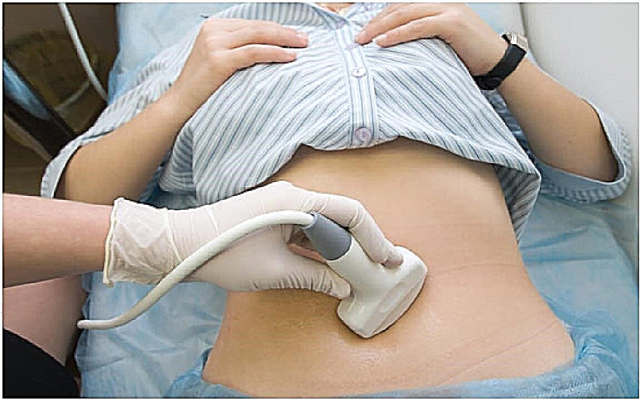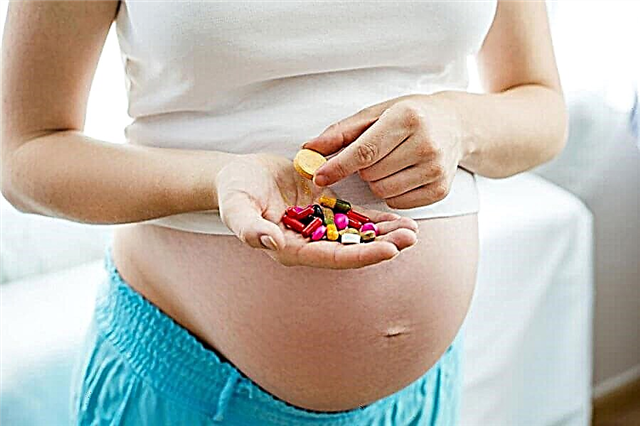
Many diseases of the central nervous system and neurological pathologies are treated with nootropics. These drugs include Encephabol. The medication is in demand in adult patients with vascular disorders, dementia and atherosclerosis. It is also often used in pediatric practice for developmental problems, mental dysfunctions, nerve damage, and other indications.

Release form
There are two dosage forms of "Encephabol":
- Suspension. It is sold in a dark glass bottle with 200 ml of a viscous liquid inside. It has a pleasant aroma, sweet aftertaste and milky white hue.
- Pills. They are packed in blisters of 10 pieces, and one pack contains 50 tablets. They have a biconvex round shape and a shiny yellow shell.


Composition
The active ingredient in both forms of "Encephabol" is a substance called "pyritinol". It is contained in the medication in the form of monohydrate dihydrochloride. Every 5 milliliters of suspension acts as a source of 100 mg of such a compound. The same amount of pyritinol is contained in one tablet.
In addition to it, povidone, sodium saccharinate, glycerol, potassium sorbate, natural essence and some other inactive components are added to the suspension. The auxiliary ingredients of the solid form are talc, mountain wax, milk sugar, acacia gum and other substances, the list of which can be specified on the package.


Operating principle
Encephabol primarily affects metabolic processes in the brain tissues. In particular, under the action of the drug, glucose is better absorbed by nerve cells, and the metabolism of nucleic acids is accelerated. In addition, under the influence of pyritinol, nerve impulses are transmitted better, and the release of neurotransmitters is activated.
Due to the fact that the drug is able to stabilize neural membranes, brain cells become more resistant to free radicals and other damaging factors. The drug also has a positive effect on blood flow in the brain, as it affects the viscosity of the blood and some characteristics of red blood cells (in particular, their plasticity). The use of "Encephabol" increases the efficiency of the central nervous system and improves mental functions (memory, attention, speech development and others).
The absorption of the active ingredient from the swallowed preparation, both in the form of a suspension and in tablet form, occurs rather quickly. The bioavailability of pyritinol is 85%, and its maximum blood levels are recorded 0.5-1 hours after ingestion. The excretion of the active ingredient occurs mainly in the urine. Most of the medicine leaves the human body within 48 hours. At the same time, even if you give the patient "Encephabol" for a long time, for example, several months, it will not accumulate in the nervous and other tissues.

Indications
In childhood, "Encephabol" is in demand:
- with hyperactivity syndrome;
- to eliminate the consequences of meningitis or encephalitis;
- with hypoxic, bilirubin or other encephalopathy;
- with apathy, headaches, irritability and other symptoms of cerebroasthenic syndrome;
- with delayed mental or speech development;
- with attention disorders;
- to eliminate the toxic effect on the brain of various toxic substances;
- with brain injury, traumatic brain injury, concussion and other traumatic injuries;
- with oligophrenia;
- with large physical or intellectual overload.
At what age is it assigned?
"Encephabol" in suspension is allowed even for babies. According to the instructions, this form of medication is prescribed to newborns from the third day of life.
The drug in tablets is used in the treatment of children over 7 years old, but if there are problems with swallowing, a seven-year-old child or an older patient can continue to be given a suspension, because the tablet cannot be divided into parts.

Contraindications
The medicine is prohibited for use in case of hypersensitivity to its active or any auxiliary component. There are also many relative contraindications to taking the drug, in the presence of which the advisability of treatment should be decided by a specialist individually. These include significant changes in peripheral blood, kidney disease, autoimmune pathologies, myasthenia gravis, and severe liver disease. Suspension due to the presence of sorbitol in such "Encephabol" cannot be used in case of fructose intolerance.

Side effects
In some children, the drug provokes an increase in the excitability of the nervous system and can interfere with falling asleep, cause insomnia or restless sleep. For this reason, the medicine should not be given in the evening. Sometimes the use of "Encephabol" causes decreased appetite, vomiting, dizziness, loose stools, rapid fatigue, disturbances in taste and other negative symptoms. When they appear, you need to consult a doctor.
Occasionally, a skin rash or other allergic reaction occurs on the drug, which requires immediate discontinuation of treatment.

Instructions for use
The suspension should be given to children either with food or immediately after a morning or lunch meal. For dosing, use an ordinary teaspoon (it contains 5 milliliters of liquid "Encephabol") or some measure from another medicine, for example, a plastic syringe from an antipyretic agent.
The tablet preparation must be swallowed without damaging the membrane. It is unacceptable to bite through or divide such "Encephabol" into halves. It is best to drink the medicine with clean water.
Dosages for children
The doctor must determine the single doses and treatment regimen for each small patient individually. To do this, the specialist takes into account the severity of the damage to the nervous system, the age of the child and the response to therapy. Newborns are most often given a suspension of 1 ml in one of the morning feedings. This dose is prescribed from the third day of life to 2 months. Further, the weekly daily dosage is increased by 1 ml until the baby receives 5 ml of liquid "Encephabol" per day.
The dose of the suspension for a child over one year old is from 50 to 300 mg of the active ingredient (up to 600 mg from the age of seven). The drug is taken in the amount prescribed by the doctor once or divided into 2-3 doses.
If a child over 7 years old has been prescribed “Encephabol” in solid form, then the drug is usually given 1-2 tablets per dose, one to three times a day.

How long to take?
The duration of Encephabol treatment is determined separately for each baby. In acute conditions, the therapeutic effect of the drug becomes noticeable already in the first day, therefore, the duration of therapy is short. In case of a chronic problem, for the appearance of good results, taking "Encephabol" should be at least two months, since the effect of the medication will be noticeable at least 2-4 weeks after the start of use.
If the suspension is prescribed to a newborn with brain damage or a high risk of neurological disorders, the course of therapy usually lasts six months. However, after three months, additional examinations of the child are needed, after which they determine whether to continue taking Encephabol or whether it is already possible to refuse such treatment.

Overdose
Taking "Encephabol" in higher doses can provoke diarrhea, CNS excitability, vomiting, fever, nausea and other symptoms. To eliminate them, you need to rinse the child's stomach and give a sorbent.

Interaction with other drugs
You cannot use Encephabol and sulfasalazine together, as well as penicillamine preparations or gold preparations. Such combinations of medicines threaten the appearance of side effects. It is not forbidden to combine "Encephabol" in tablets or suspension with other medicines (for example, with magnesium).

Terms of sale
To buy any form of the drug in a pharmacy, you first need to visit a specialist, since Encephabol is sold with a prescription. For one bottle of suspension you need to pay from 750 to 900 rubles, and the average price of a package of tablets is about 1000 rubles.

Storage conditions
Store any form of "Encephabol" at home at + 20 + 25 degrees in a dry place. The shelf life of both tablets and suspensions is 5 years.
The drug (especially the liquid form) must be safely hidden from small children.

Reviews
There are mostly good reviews about the use of Encephabol. The advantages of liquid medicine are called the possibility of treating infants, high efficiency and pleasant taste. The disadvantages of the suspension include its high cost, and some babies, after taking this drug, have unpleasant symptoms (rash, nausea, and others).
Among the positive characteristics of the tablets, many parents note their effective action, sweet taste of the shell, small size and good tolerance. However, in some reviews, the appearance of adverse reactions is noted, and the price of the medicine is called high.

Analogs
Since other drugs based on pyritinol are not available, other nootropic drugs can replace Encephabol, because they have a similar effect on the central nervous system. If an analogue of the suspension is needed, the doctor will recommend:
- Pantogam syrup, which contains hopantenic acid and is used from birth. It is able to protect nerve cells from many negative factors and improve metabolic processes in brain tissues. In addition, this medication has an anticonvulsant effect.

- "Cortexin for Children". This is a nootropic drug in injections, which is also allowed at any age and can be used even in premature babies. It works thanks to low molecular weight peptides that protect neurons, improve their functions, and help restore brain tissue in case of damage. It is prescribed for speech underdevelopment, cerebral palsy, encephalopathy, epilepsy and other neurological problems.

- "Cogitum"... This drug in ampoules contains acetylamino-succinic acid, which has a positive effect on the central nervous system. It is used for asthenia, neuroses, developmental problems (ZPR, ZRD), hysterics, mental retardation and other pathologies. The solution is given to children over 7 years old to drink, but some neuropathologists prescribe it to patients under the age of seven, choosing the dosage individually.

- Cerebrolysin. Such a drug based on peptides, which have a small molecular weight, has a specific effect on brain tissue, therefore it is used for trauma, depression, ADHD and developmental delay. Injections of "Cerebrolysin" are safe even for infants, therefore they are prescribed from birth.

One of these drugs, also presented in solid form, is capable of replacing a medicine in tablets:
- Phenibut. The basis of such tablets is aminophenylbutyric acid, due to which the drug has a positive effect on blood flow and metabolic processes in the brain, as well as on the speed of transmission of nerve impulses. This drug also helps to eliminate anxiety, fear or asthenia. Children are prescribed it from the age of three.

- "Aminalon". The action of such a drug is caused by gamma-aminobutyric acid, which is one of the neurotransmitters. The tablets are used for various brain damage, developmental delay, headaches, vestibular disorders. They are prescribed for children over 1 year old.

- "Pantocalcin". Such a nootropic based on hopantenic acid protects neurons and improves metabolic processes in them, which is used for traumatic brain injuries, neuroinfections and other problems. In addition, this medicine has an anticonvulsant effect and is used for enuresis. He is discharged from the age of 3.

For neurological problems in children, see the following video.



